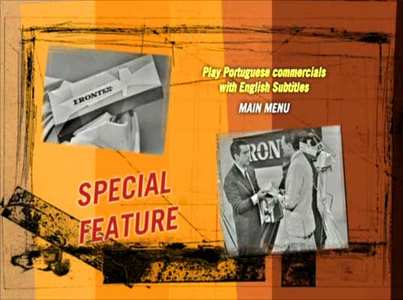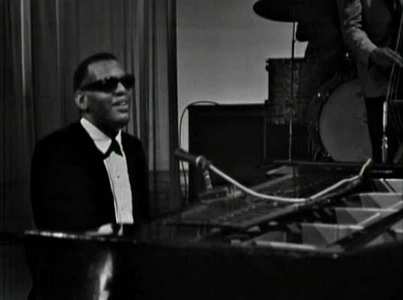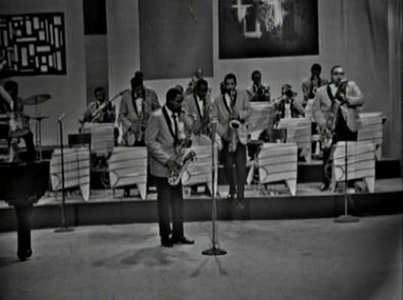Review of Ray Charles: Live In Brazil, 1963
Introduction
It can`t be mere coincidence that this vintage television performance has come out on DVD at exactly the same time as the new Ray Charles biopic "Ray" has hit cinemas (here in the UK). And it isn`t. "Ray Charles - O Genio" (O Genio means The Genius) is a performance for Brazilian television recorded on 22nd September 1963. That makes the recording just four months younger than this reviewer, and does nothing to make him feel any younger.
Ray Charles was an unusual performer in that he collected his performances, and this is one such preserved recording - if he hadn`t had an agreement to get the tape after it had aired, it is very likely it would have been wiped and permanently lost to posterity. Recorded in Sao Paulo the day before Ray`s 33rd birthday, the performance catches him at the height of his creative powers.
There are seventeen individual songs and twenty-six performances on the disc, with two sets of "Erontex" commercial breaks.

Video
This performance is part of a Brazilian tv broadcast from September 1963. Anyone familiar with old videotape shows will realise this means quality problems. The programme is presented in monochrome 4:3 as broadcast, and comes in two halves - a studio rehearsal without adverts and the actual transmission with adverts included. The second show is the poorer of the two because of tape problems, but the quality of the images given the vintage of the material is better than might be expected.
Rather than get your hopes up, though, I have to point out the picture is pretty far removed from what a modern audience might think is acceptable quality. There is a small-print note on the back of the box that says "Astute viewers may notice anomalies on the underlying video master on the second set". That is putting it mildly. Throughout the whole show there are all the hallmarks of old black-and-white television production. The camera tubes in early tv cameras suffered from all kinds of flares and streaking caused by the tubes` oversensitivity to bright light. This means that bright reflections on brass instruments are surrounded by fuzzy, black haloes. Dark objects tend to look very flat and featureless and usually have darker edges than rendering properly. In the first half of the show there is a persistent interference line cycling down the frame and quad sparklies (dropouts between the multiple scan heads of a Quad 2" videotape machine) are very evident. These get worse in the second set, almost making the image look louvred as it breaks up into panels.
Although suitable for use with regions 2,3,4 and 5 machines, the disc is in NTSC format like the original recording so you might want to make sure your setup can handle such signals before purchasing. If you can play Region 1 discs without problems, you can play this one.

Audio
The sound is in mono, reproduced by Dolby Digital 2.0

Features
The special feature on the disc is to be able to run the Erontex commercials which break up the second part of the programme with English subtitles.

Conclusion
It`s always fascinating to see vintage television performances by great performers, and this disc is no exception. Especially as the production originates from Brazilian television. Although there are some technical problems caused by the transfer from 2" Quad to digital, you can overlook the shortcomings and just enjoy the performance.
Your Opinions and Comments
Be the first to post a comment!